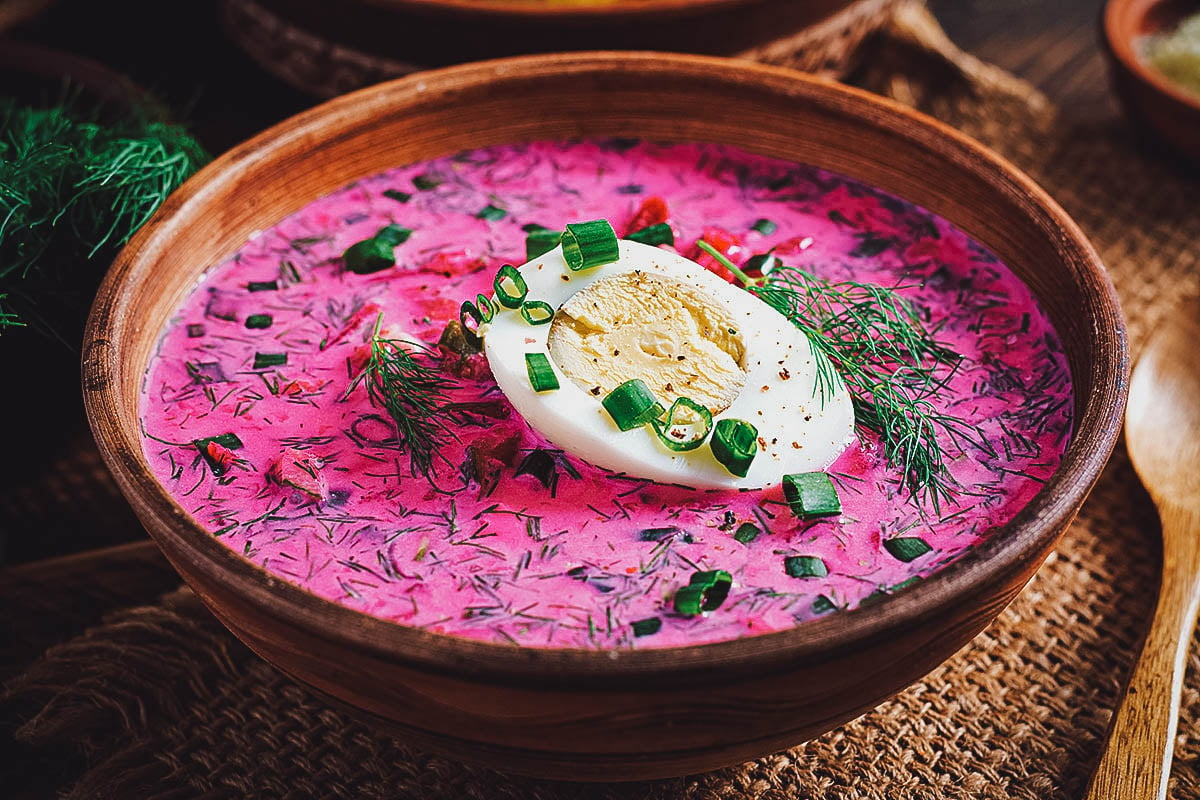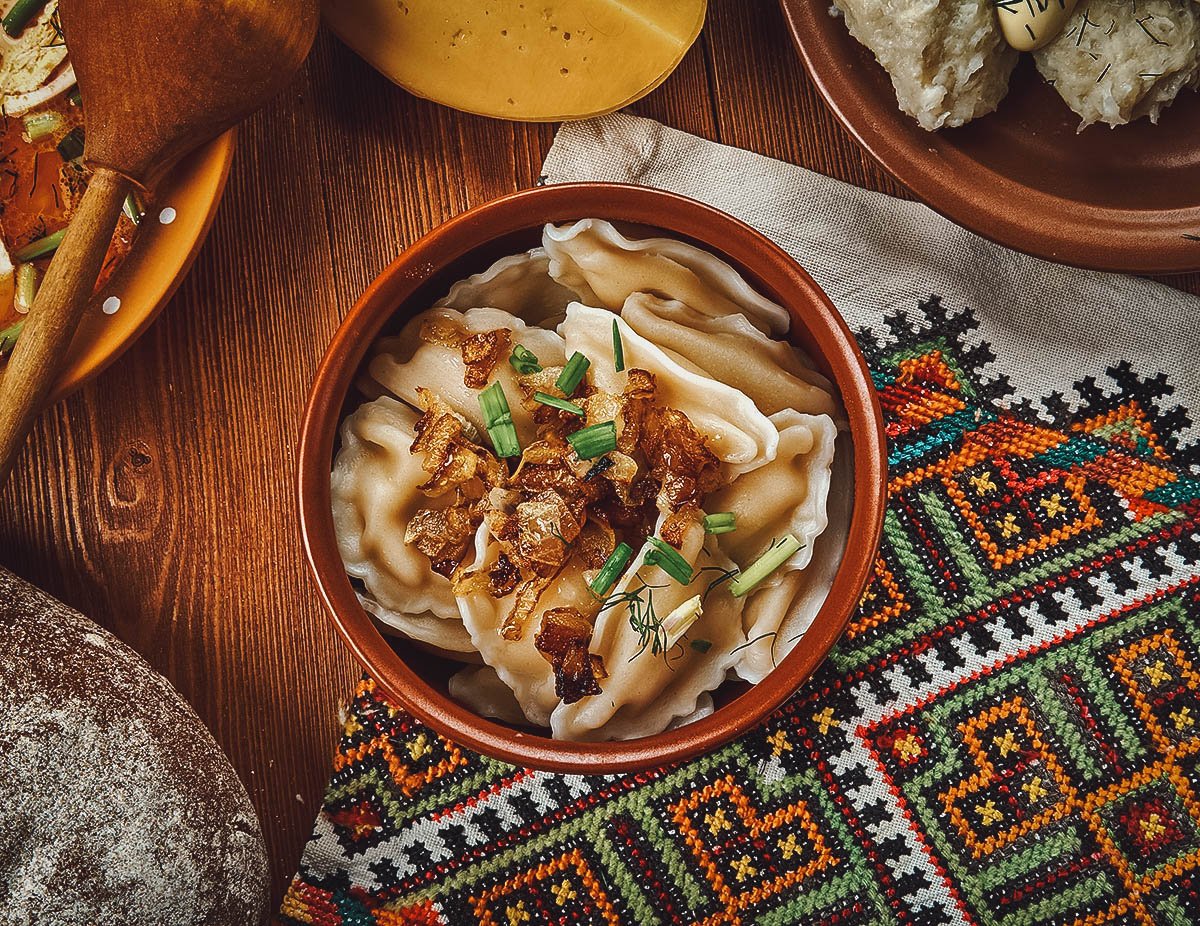Lithuanian meals, a vibrant tapestry of flavors and traditions, invitations you on a culinary journey that tantalizes the style buds and captivates the senses. Steeped in historical past and cultural influences, this delicacies boasts distinctive traits and flavors that set it aside as a culinary gem.
From hearty dumplings to refreshing soups and delectable pastries, Lithuanian delicacies showcases the nation’s wealthy heritage and the fervour of its individuals for meals.
Lithuanian Delicacies

Lithuanian delicacies is a mirrored image of the nation’s wealthy historical past and cultural influences. It’s a hearty and flavorful delicacies, with a deal with easy, rustic dishes. Lithuanian meals is usually characterised by its use of potatoes, meat, and dairy merchandise.One
of essentially the most distinctive options of Lithuanian delicacies is its use of fermented meals. Fermented meals are a staple in lots of conventional Lithuanian dishes, and so they add a singular sourness and complexity to the flavors. A few of the hottest fermented meals in Lithuania embody sauerkraut, beets, and kefir.
Conventional Lithuanian Dishes: Lithuanian Meals
Lithuanian delicacies is a hearty and flavorful reflection of the nation’s wealthy historical past and agricultural traditions. Conventional Lithuanian dishes typically characteristic a mix of meats, potatoes, and dairy merchandise, showcasing the nation’s abundance of those substances.
A few of the hottest conventional Lithuanian dishes embody Cepelinai, Šaltibarsščiai, and Kugelis. These dishes usually are not solely scrumptious but additionally maintain cultural significance, typically served throughout particular events and celebrations.
Cepelinai
Cepelinai are giant dumplings constituted of a combination of grated potatoes and floor meat, usually pork or beef. The dumplings are then boiled and served with a wide range of sauces, comparable to bitter cream, mushroom sauce, or bacon bits. Cepelinai are a nationwide dish of Lithuania and are sometimes thought of an emblem of Lithuanian delicacies.
Šaltibarsščiai
Šaltibarsščiai is a chilly beetroot soup that’s fashionable in Lithuania through the summer time months. The soup is made with grated beets, kefir (a fermented milk drink), and varied greens, comparable to cucumbers, radishes, and dill. Šaltibarsščiai is a refreshing and flavorful soup that’s good for a sizzling summer time day.
Kugelis
Kugelis is a baked potato casserole that’s fashionable in Lithuania. The casserole is made with grated potatoes, eggs, and bacon. Kugelis is a hearty and satisfying dish that’s typically served as a predominant course or a facet dish.
Regional Variations

Lithuanian delicacies displays regional variations as a result of numerous historic influences and geographical components. Dishes particular to completely different elements of the nation showcase distinctive culinary traditions.
For instance, the coastal areas of Lithuania, significantly Klaipėda, are famend for his or her seafood dishes. Smoked fish, comparable to salmon and herring, is a staple ingredient in these areas. Conventional soups like žuvienė, a hearty fish soup, are additionally fashionable.
Japanese Lithuania
- Influenced by Belarusian and Russian cuisines
- Dishes typically characteristic potatoes, cabbage, and meat
- Fashionable dishes embody kugelis, a potato pudding, and blynai, buckwheat pancakes
Western Lithuania
- Influenced by German and Polish cuisines
- Recognized for its dairy merchandise and meat dishes
- Fashionable dishes embody skilandis, a smoked sausage, and žemaičių blynai, potato pancakes
Southern Lithuania
- Influenced by Ukrainian and Tatar cuisines
- Dishes typically characteristic greens, grains, and meat
- Fashionable dishes embody cepelinai, potato dumplings crammed with meat or cheese, and šaltibarsščiai, a chilly beetroot soup
Substances and Flavors

Lithuanian delicacies closely depends on contemporary, domestically sourced substances, leading to dishes which are each flavorful and healthful. These substances contribute to the distinct taste profiles and textures that characterize Lithuanian cooking.
A key ingredient in Lithuanian cooking is rye flour, which is used to make varied kinds of bread, dumplings, and pancakes. Rye flour imparts a barely bitter and nutty taste to those dishes, in addition to a dense and chewy texture.
Greens, Lithuanian meals
- Potatoes:A staple ingredient in Lithuanian delicacies, potatoes are utilized in soups, stews, dumplings, and pancakes. They contribute a starchy texture and a gentle, earthy taste.
- Beets:Beets are one other fashionable vegetable in Lithuania, typically utilized in soups, salads, and fermented dishes. They add a vibrant pink coloration and a barely candy, earthy taste.
- Cabbage:Cabbage is a flexible vegetable that’s utilized in a wide range of Lithuanian dishes, together with soups, stews, and salads. It supplies a crunchy texture and a barely bitter taste.
Dairy Merchandise
- Bitter cream:Bitter cream is a staple condiment in Lithuanian cooking, used so as to add richness and tanginess to soups, stews, and dumplings. It’s also used as a base for varied sauces.
- Cheese:Lithuanian cheeses are usually delicate and creamy, with a barely bitter taste. They’re typically utilized in soups, salads, and pastries.
- Butter:Butter is used extensively in Lithuanian cooking, each for cooking and baking. It provides a wealthy, creamy taste and a velvety texture to dishes.
Meat and Fish
- Pork:Pork is essentially the most generally used meat in Lithuanian delicacies, showing in dishes comparable to sausages, stews, and roasts. It supplies a wealthy, flavorful style and a young texture.
- Beef:Beef is one other fashionable meat in Lithuania, typically utilized in soups, stews, and meatballs. It has a barely extra intense taste than pork and a firmer texture.
- Fish:Fish, significantly herring, is a vital a part of Lithuanian delicacies. It’s typically smoked, pickled, or fried, and served with potatoes or rye bread.
Spices and Herbs
- Dill:Dill is a extensively used herb in Lithuanian cooking, including a contemporary, barely tangy taste to dishes. It’s typically utilized in soups, stews, and salads.
- Caraway:Caraway seeds are used so as to add a barely candy, nutty taste to bread, pastries, and stews.
- Marjoram:Marjoram is one other fashionable herb in Lithuanian delicacies, offering a barely bitter, fragrant taste to soups, stews, and meat dishes.
Fashionable Interpretations
In recent times, Lithuanian delicacies has undergone a revival, with modern cooks reinterpreting conventional dishes with trendy methods and flavors.
These revolutionary cooks are mixing conventional Lithuanian substances and flavors with worldwide influences, creating dishes which are each acquainted and thrilling.
Examples of Revolutionary Dishes
- Cepelinai with a twist:Conventional cepelinai, a Lithuanian dumpling crammed with meat or mushrooms, are given a contemporary makeover with fillings like smoked salmon and goat cheese, or served with a creamy truffle sauce.
- Kibinai with gourmand fillings:Kibinai, crescent-shaped pastries crammed with meat or cabbage, are elevated with fillings like wild boar or duck confit, and served with dipping sauces like horseradish cream or beetroot relish.
- Šaltibarsščiai with a refreshing twist:Šaltibarsščiai, a chilly beet soup, is given a contemporary replace with the addition of grilled greens, feta cheese, and even avocado.
Cultural Significance
Meals holds a profound cultural significance in Lithuania, deeply intertwined with the nation’s historical past, traditions, and social material. It performs a pivotal function in festivals, celebrations, and on a regular basis life, symbolizing unity, heritage, and the preservation of culinary customs.
Throughout festive events, conventional Lithuanian dishes take middle stage. Christmas Eve is marked by the sharing of Kūčios, a meatless feast that includes 12 symbolic dishes representing the apostles. At Easter, households collect for Velykos, the place painted eggs, an emblem of recent life, are exchanged alongside conventional Easter bread.
Meals in On a regular basis Life
In on a regular basis life, meals is a supply of consolation and nourishment. Lithuanian delicacies is thought for its hearty, rustic dishes, reflecting the nation’s agricultural heritage. Soups, stews, and dumplings are staples, typically accompanied by contemporary greens and selfmade rye bread.
Dietary Restrictions
Lithuanian delicacies is mostly adaptable to dietary restrictions and provides choices for vegetarians, vegans, and people with particular allergy symptoms.
Vegetarian and vegan choices are available, with dishes that includes hearty greens, legumes, and dairy options. For instance, “cepelinai” (stuffed potato dumplings) could be made vegan by utilizing a plant-based filling.
Allergy symptoms
For people with allergy symptoms, Lithuanian delicacies provides a wide range of dishes that may be modified to accommodate particular wants.
- Gluten-free:Many conventional Lithuanian dishes, comparable to “kugelis” (potato pudding), could be made gluten-free by utilizing various flours like buckwheat or rice flour.
- Dairy-free:Lithuanian delicacies contains many dairy-free choices, comparable to ” šaltibarsščiai” (chilly beetroot soup) and “grybai su grietine” (mushrooms with bitter cream), which could be made dairy-free by utilizing plant-based bitter cream options.
- Egg-free:Many Lithuanian dishes, comparable to “blynai” (pancakes), could be made egg-free by utilizing various binding brokers like flaxseed or chia seeds.
FAQ Information
What are some fashionable conventional Lithuanian dishes?
Cepelinai, Šaltibarsščiai, and Kugelis are among the many most well-known conventional Lithuanian dishes.
What are some key substances utilized in Lithuanian cooking?
Potatoes, rye flour, beetroot, mushrooms, and dairy merchandise are generally used substances in Lithuanian delicacies.
Are there any dietary restrictions to think about when consuming Lithuanian meals?
Lithuanian delicacies provides choices for vegetarians and vegans, nevertheless it’s essential to notice that many conventional dishes comprise dairy merchandise and meat.

